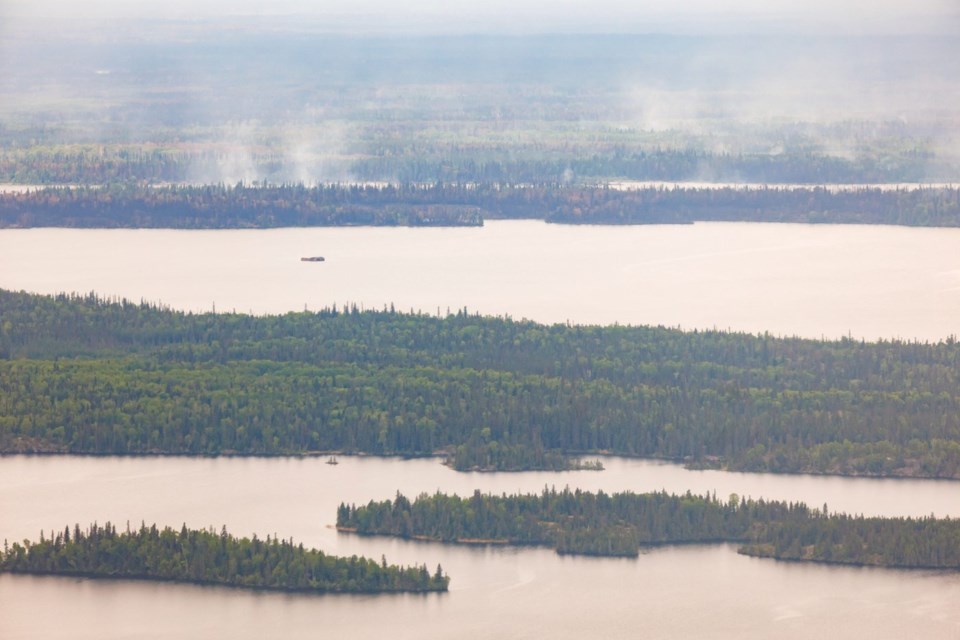The smoky air that has become an all-too-common feature of Canadian summers poses yet another challenge for agricultural producers already contending with chronic drought in some areas and excess moisture in others.

The smoky air that has become an all-too-common feature of Canadian summers poses yet another challenge for agricultural producers already contending with chronic drought in some areas and excess moisture in others.
A thick haze blanketed much of the Prairies and Central Canada on Monday as wildfires burned in northern Saskatchewan, Manitoba and Ontario.
Environment Canada issued air quality warnings advising people to stay indoors — not an option for those growing the food Canadians rely on.
As for how the smoke affects the crops themselves — it’s complicated, said Ashley Ammeter, whole farm specialist at the Manitoba Crop Alliance.
“One of the big challenges we have is that although some of these wildfire events are becoming more common, they’re still relatively unpredictable and that also makes it hard to properly study these effects,” she said.
The haze can reflect and interfere with sunlight, which could disrupt photosynthesis. How that affects yields depends on the type of crop — soybeans would likely fare better than corn — and the timing of the smoky days, Ammeter said.
Ozone produced when sunlight is exposed to pollutants in the smoke can also damage plant tissues and leaves, potentially reducing yields.
On the flip side, smoke could scatter sunlight in such a way that it can better penetrate the canopy of a tall crop like corn. It can also reduce temperatures — a benefit or a drawback, depending on whether recent weather has been hot or cool.
Either way, there’s not a lot a grower can do.
“Like a lot of things with weather and agriculture, you’re very much at the mercy of what’s going on. Essentially, you just have to ride it out,” Ammeter said.
In the grand scheme of things, the impact of smoke is thought to be relatively minor, she added. Drought — a major problem in recent years on the Prairies — and excess moisture are much more problematic.
Paul Gregory, with Interlake Honey Producers Ltd. about 150 kilometres north of Winnipeg, said wildfire smoke is bad news for anyone in the bee-keeping business.
The insects have evolved to go into a “safety response” when smoke is in the air, said Gregory, who is also vice-chair of the Manitoba Beekeepers Association.
“They get docile, but they quit foraging. And when they quit foraging, of course, there’s no nectar coming in,” he said.
“So they’re just sort of hovering around. They’re not doing a whole lot, because they’re thinking: ‘Hey, we might have to leave our home because there could be a wildfire coming.’ So it does impact our honey production.”
Gregory figures he’s looking at a 30 to 40 per cent drop in honey production year-over-year.
The smoke compounds existing problems from drought.
“In dry years, definitely there’s less nectar coming in,” he said. “We still get a crop, because the blossoms are blooming, but if the crop is under stress, then the blossoms will be in a shorter duration.”
As for protecting the health of the honey operation’s workforce — mainly labourers from Nicaragua — the only thing Gregory can do is cut the day short on poor-air-quality days.
The same things humans often experience on smoky days — irritated eyes, a scratchy throat or trouble breathing — may also affect livestock animals, said Dr. Leigh Rosengren, chief veterinary officer at the Canadian Cattle Association.
“But of course, we don’t have the option with cattle to go indoors or to evacuate areas easily. So we are certainly watching them and monitoring them more closely for any sort of respiratory issues or irritation of their eyes or nose, those respiratory tract areas,” she said.
Any overt signs an animal is struggling would warrant a visit to the veterinarian, said Rosengren. Otherwise, producers can make sure the cattle have clean water without ash in it, are getting immune-supporting nutrition and aren’t enduring undue stress from too much handling, moving and co-mingling.
Dr. Guillaume Lhermie, a veterinarian who teaches animal health economics at the University of Calgary, said it’s often tough to tell if an animal is unwell, but farmers can look out for shortness of breath or difficulty moving. If symptoms are severe, anti-inflammatory medication may be needed.
“Prevention is actually quite difficult,” he said.
From a business perspective, the prospect of the wildfire itself approaching a farm or ranch is much more disruptive as it’s no easy feat to round up thousands of cattle and quickly move them to safety, Lhermie said.
Another challenge is grass being burned.
“That means you may have difficulty to have new pasture and feed for the next month, so that’s also a massive disrupter in the farm economy,” Lhermie said.
Gregory, the Manitoba beekeeper, said what he’s seeing in his business drives home that the impacts of climate change have arrived.
“It’s very sad to see that this is the climate we’re giving our grandchildren and children.”
This report by The Canadian Press was first published July 15, 2025.
Lauren Krugel, The Canadian Press